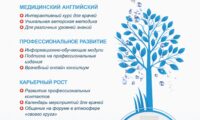Получена: 19.05.2023 / Принята: 15.05.2023 / Опубликована online: 30.06.2023
УДК 61:575:616.24
DOI 10.53511/PHARMKAZ.2023.32.87.009
Р.Б. Бекмагамбетова1, Ж.Б. Испаева1, М.О., Мустафина2, Н.Б. Джанабаева3,А.Ж. Семейгажина4
, Е.Ф. Ковзель5, Г.М. Тусупбекова6, М.А. Моренко7
1,2,3,4Казахский Национальный Медицинский Университет им. С.Д. Асфендиярова, Алматы, Республика Казахстан
5 Корпоративный Фонд “University Medical Center” Назарбаев Университета, Астана, Республика Казахстан
6Больница Медицинского центра Управления делами Президента Республики Казахстан,
Астана, Республика Казахстан
7НАО «Медицинский университет Астана» , Астана, Республика Казахстан
РОЛЬ ГЕНЕТИЧЕСКИХ ФАКТОРОВ В РАЗВИТИИ БРОНХИАЛЬНОЙ АСТМЫ:
АСТМА И ГЕНЕТИЧЕСКИЙ ПОЛИМОРФИЗМ
Резюме: Астма является наиболее распространенным хроническим заболеванием дыхательных
путей во всем мире. Бронхиальная астма (БА) — это гетерогенное заболевание, в основе развития которого лежат сложные взаимодействия между различными генами и факторами окружающей среды. По результатам полногеномных ассоциативных исследований (GWAS), главную и значимую роль в возникновении астмы и развитии играет генетическая предрасположенность. Целью
данной работы является проведение анализа имеющейся литературы, описывающее связь между полиморфными вариантами генов и астмой для понимания связи между возникновением и развитием БА и генетическими факторами.
Ключевые слова: бронхиальная астма, генетические факторы, полиморфизм генов, полногеномное ассоциативное исследование (GWAS), однонуклеотидный полиморфизм (SNP.
СПИСОК ЛИТЕРАТУРЫ
1 von Mutius E. Gene-environment interactions in asthma. J Allergy Clin Immunol 2009;123:3-11; quiz 12-3. 10.1016/j.jaci.2008.10.046.
2 Fagnani C, Annesi-Maesano I, Brescianini S, et al. Heritability and shared genetic effects of asthma and hay fever: an Italian study of young twins. Twin Res
Hum Genet 2008;11:121-31. 10.1375/twin.11.2.121.
3 Thomsen SF, van der Sluis S, Kyvik KO, et al. Increase in the heritability of asthma from 1994 to 2003 among adolescent twins. Respir Med 2011;105:1147-
52. 10.1016/j.rmed.2011.03.007.
4 Moffatt MF, Kabesch M, Liang L, et al. Genetic variants regulating ORMDL3 expression contribute to the risk of childhood asthma. Nature 2007;448:470-3.
10.1038/nature06014.
5 Vercelli D. Discovering susceptibility genes for asthma and allergy. Nat Rev Immunol 2008;8:169-82. 10.1038/nri2257.
6 M Pividori, N Schoettler, DL Nicolae, C Ober, HK Im. Shared and distinct genetic risk factors for childhood-onset and adult-onset asthma: genome-wide and
transcriptome-wide studiesThe Lancet Respiratory Medicine 7 (6), 509-522.
7 Taube C, Duez C, Cui ZH, et al. The role of IL-13 in established allergic airway disease. J Immunol 2002;169:6482-9. 10.4049/jimmunol.169.11.6482.
8 Kuperman DA, Huang X, Koth LL, et al. Direct effects of interleukin-13 on epithelial cells cause airway hyperreactivity and mucus overproduction in asthma.
Nat Med 2002;8:885-9. 10.1038/nm734.
9 Liu X, Nickel R, Beyer K, et al. An IL13 coding region variant is associated with a high total serum IgE level and atopic dermatitis in the German multicenter
atopy study (MAS-90). J Allergy Clin Immunol 2000;106:167-70. 10.1067/mai.2000.107935.
10 Smolkova B, Tulinska J, Palkovicova Murinova L, et al. Impact of interleukin 13 (IL13) genetic polymorphism Arg130Gln on total serum immunoglobulin
(IgE) levels and interferon (IFN)-γ gene expression. Clin Exp Immunol 2017;188:45-52. 10.1111/cei.12923.
11 Saha SK, Berry MA, Parker D, et al. Increased sputum and bronchial biopsy IL-13 expression in severe asthma. J Allergy Clin Immunol 2008;121:685-91.
10.1016/j.jaci.2008.01.005.
12 Nie W, Liu Y, Bian J, et al. Effects of polymorphisms -1112C/T and +2044A/G in interleukin-13 gene on asthma risk: a meta-analysis. PLoS One
2013;8:e56065. 10.1371/journal.pone.0056065.
13 Omraninava M, Eslami MM, Aslani S, et al. Interleukin 13 gene polymorphism and susceptibility to asthma: a meta-regression and meta-analysis. Eur Ann
Allergy Clin Immunol 2020. [Epub ahead of print]. 10.23822/EurAnnACI.1764-1489.180.
14 Xu Y, Li J, Ding Z, et al. Association between IL-13 +1923C/T polymorphism and asthma risk: a meta-analysis based on 26 case-control studies. Biosci Rep
2017;37:BSR20160505. 10.1042/BSR20160505.
15 Nicholson EG, Schlegel C, Garofalo RP, et al. Robust Cytokine and Chemokine Response in Nasopharyngeal Secretions: Association With Decreased
Severity in Children With Physician Diagnosed Bronchiolitis. J Infect Dis 2016;214:649-55. 10.1093/infdis/jiw191.
16 Hymowitz SG, Filvaroff EH, Yin JP, et al. IL-17s adopt a cystine knot fold: structure and activity of a novel cytokine, IL-17F, and implications for receptor
binding. EMBO J 2001;20:5332-41. 10.1093/emboj/20.19.5332.
17 Roussel L, Houle F, Chan C, et al. IL-17 promotes p38 MAPK-dependent endothelial activation enhancing neutrophil recruitment to sites of inflammation.
J Immunol 2010;184:4531-7. 10.4049/jimmunol.0903162.
18 Halwani R, Al-Muhsen S, Hamid Q. T helper 17 cells in airway diseases: from laboratory bench to bedside. Chest 2013;143:494-501. 10.1378/chest.12-0598.
19 Holster A, Teräsjärvi J, Lauhkonen E, et al. IL-17A gene polymorphism rs2275913 is associated with the development of asthma after bronchiolitis in infancy.
Allergol Int 2018;67:109-13. 10.1016/j.alit.2017.05.010.
20 Jin Y, Deng Z, Cao C, et al. IL-17 polymorphisms and asthma risk: a meta-analysis of 11 single nucleotide polymorphisms. J Asthma 2015;52:981-8.
10.3109/02770903.2015.1044251.
21 Zhu M, Wang T, Chen R, et al. Association between interleukin-17a gene polymorphisms and asthma risk: a meta-analysis. Asian Pac J Allergy Immunol
2016;34:115-23.
22 Phipps S, Lam CE, Foster PS, et al. The contribution of toll-like receptors to the pathogenesis of asthma. Immunol Cell Biol 2007;85:463-70. 10.1038/
sj.icb.7100104.
23 Zakeri A, Russo M. Dual Role of Toll-like Receptors in Human and Experimental Asthma Models. Front Immunol 2018;9:1027. 10.3389/fimmu.2018.01027.
24 Gao Y, Xiao H, Wang Y, et al. Association of single-nucleotide polymorphisms in toll-like receptor 2 gene with asthma susceptibility: A meta-analysis. Medicine
(Baltimore) 2017;96:e6822. 10.1097/MD.0000000000006822.
25 Zhao J, Shang H, Cao X, et al. Association of polymorphisms in TLR2 and TLR4 with asthma risk: An update meta-analysis. Medicine (Baltimore)
2017;96:e7909. 10.1097/MD.0000000000007909.
26 Shukur W, Alyaqubi K, Dosh R, et al. Association of Toll-like receptors 4 (TLR-4) gene expression and polymorphisms in patients with severe asthma. J
Med Life 2021;14:544-8. 10.25122/jml-2021-0173.
27 Tizaoui K, Kaabachi W, Hamzaoui K, et al. Association of Single Nucleotide Polymorphisms in Toll-like Receptor Genes With Asthma Risk: A Systematic
Review and Meta-analysis. Allergy Asthma Immunol Res 2015;7:130-40. 10.4168/aair.2015.7.2.130.
28 Yawn J, Lawrence LA, Carroll WW, et al. Vitamin D for the treatment of respiratory diseases: is it the end or just the beginning? J Steroid Biochem Mol Biol
2015;148:326-37. 10.1016/j.jsbmb.2015.01.017.
29 Miraglia Del Giudice M, Allegorico A, Grandone A, et al. VITAMIN D AND BRONCHIAL INFLAMMATION IN ASTHMATIC CHILDREN. J Biol Regul Homeost
Agents 2015;29:125-9.
30 Uitterlinden AG, Fang Y, van Meurs JB, et al. Vitamin D receptor gene polymorphisms in relation to Vitamin D related disease states. J Steroid Biochem
Mol Biol 2004;89-90:187-93. 10.1016/j.jsbmb.2004.03.083.
31 Fang Y, van Meurs JB, d’Alesio A, et al. Promoter and 3′-untranslated-region haplotypes in the vitamin d receptor gene predispose to osteoporotic fracture:
the rotterdam study. Am J Hum Genet 2005;77:807-23. 10.1086/497438.
32 Despotovic M, Jevtovic Stoimenov T, Stankovic I, et al. Vitamin D Receptor Gene Polymorphisms in Serbian Patients With Bronchial Asthma: A Case-Control
Study. J Cell Biochem 2017;118:3986-92. 10.1002/jcb.2605433 Zhao DD, Yu DD, Ren QQ, et al. Association of vitamin D receptor gene polymorphisms with susceptibility to childhood asthma: A meta-analysis. Pediatr
Pulmonol 2017;52:423-9. 10.1002/ppul.23548
34 Han JC, Du J, Zhang YJ, et al. Vitamin D receptor polymorphisms may contribute to asthma risk. J Asthma 2016;53:790-800. 10.3109/02770903.2016.1158267.
35 Mohamed NA, Abdel-Rehim AS. Influence of vitamin D receptor gene FokI and ApaI polymorphisms on glucocorticoid response in patients with asthma.
Int Forum Allergy Rhinol 2020;10:556-63. 10.1002/alr.22511.
36 Shiina T, Hosomichi K, Inoko H, et al. The HLA genomic loci map: expression, interaction, diversity and disease. J Hum Genet 2009;54:15-39. 10.1038/
jhg.2008.5.
37 Yao Y, Zhu L, Li J, et al. Association of HLA-DRB1 Gene Polymorphism with Risk of Asthma: A Meta-Analysis. Med Sci Monit Basic Res 2016;22:80-6.
10.12659/MSMBR.900193.
38 Vince N, Limou S, Daya M, et al. Association of HLA-DRB1*09:01 with tIgE levels among African-ancestry individuals with asthma. J Allergy Clin Immunol
2020;146:147-55. 10.1016/j.jaci.2020.01.011.
39 Cazzola M, Page CP, Rogliani P, et al. β2-agonist therapy in lung disease. Am J Respir Crit Care Med 2013;187:690-6. 10.1164/rccm.201209-1739PP.
40 Moore PE, Laporte JD, Abraham JH, et al. Polymorphism of the beta(2)-adrenergic receptor gene and desensitization in human airway smooth muscle. Am
J Respir Crit Care Med 2000;162:2117-24. 10.1164/ajrccm.162.6.9909046.
41 Carroll CL, Stoltz P, Schramm CM, et al. Beta2-adrenergic receptor polymorphisms affect response to treatment in children with severe asthma exacerbations.
Chest 2009;135:1186-92. 10.1378/chest.08-2041.
42 Wechsler ME, Kunselman SJ, Chinchilli VM, et al. Effect of beta2-adrenergic receptor polymorphism on response to longacting beta2 agonist in asthma
(LARGE trial): a genotype-stratified, randomised, placebo-controlled, crossover trial. Lancet 2009;374:1754-64. 10.1016/S0140-6736(09)61492-6.
43 Liang SQ, Chen XL, Deng JM, et al. Beta-2 adrenergic receptor (ADRB2) gene polymorphisms and the risk of asthma: a meta-analysis of case-control
studies. PLoS One 2014;9:e104488. 10.1371/journal.pone.0104488.
44 Zhao S, Zhang W, Nie X. Association of β2-adrenergic receptor gene polymorphisms (rs1042713, rs1042714, rs1042711) with asthma risk: a systematic
review and updated meta-analysis. BMC Pulm Med 2019;19:202. 10.1186/s12890-019-0962-z.
45 Raundhal M, Morse C, Khare A, et al. High IFN-γ and low SLPI mark severe asthma in mice and humans. J Clin Invest 2015;125:3037-50. 10.1172/
JCI80911.
46 Huang TJ, MacAry PA, Eynott P, et al. Allergen-specific Th1 cells counteract efferent Th2 cell-dependent bronchial hyperresponsiveness and eosinophilic
inflammation partly via IFN-gamma. J Immunol 2001;166:207-17. 10.4049/jimmunol.166.1.207.
47 Huang HR, Zhong YQ, Wu JF. The association between IFN-γ and IL-4 genetic polymorphisms and childhood susceptibility to bronchial asthma. Gene
2012;494:96-101. 10.1016/j.gene.2011.09.027.
48 Nie W, Meng L, Wang X, et al. Interferon-gamma +874A/T polymorphism is associated with asthma risk: a meta-analysis. J Investig Allergol Clin Immunol
2014;24:324-30.
49 Jie Z, Jin M, Cai Y, et al. The effects of Th2 cytokines on the expression of ADAM33 in allergen-induced chronic airway inflammation. Respir Physiol
Neurobiol 2009;168:289-94. 10.1016/j.resp.2009.07.019.
50 Lee JY, Park SW, Chang HK, et al. A disintegrin and metalloproteinase 33 protein in patients with asthma: Relevance to airflow limitation. Am J Respir Crit
Care Med 2006;173:729-35. 10.1164/rccm.200409-1175OC.
51 Shalaby SM, Abdul-Maksoud RS, Abdelsalam SM, et al. ADAM33 and ADAM12 genetic polymorphisms and their expression in Egyptian children with
asthma. Ann Allergy Asthma Immunol 2016;116:31-6. 10.1016/j.anai.2015.10.013.
52 Deng R, Zhao F, Zhong X. T1 polymorphism in a disintegrin and metalloproteinase 33 (ADAM33) gene may contribute to the risk of childhood asthma in
Asians. Inflamm Res 2017;66:413-24. 10.1007/s00011-017-1024-8.
53 Li HF, Yan LP, Wang K, et al. Association between ADAM33 polymorphisms and asthma risk: a systematic review and meta-analysis. Respir Res 2019;20:38.
10.1186/s12931-019-1006-1.
54 Kitchens RL. Role of CD14 in cellular recognition of bacterial lipopolysaccharides. Chem Immunol 2000;74:61-82.
55 Foster SL, Medzhitov R. Gene-specific control of the TLR-induced inflammatory response. Clin Immunol 2009;130:7-15. 10.1016/j.clim.2008.08.015.
56 Vignali DA, Kuchroo VK. IL-12 family cytokines: immunological playmakers. Nat Immunol 2012;13:722-8. 10.1038/ni.2366.
57 Wang D, Yang Y, Xu J, et al. Association of CD14 -159 (-260C/T) polymorphism and asthma risk: an updated genetic meta-analysis study. Medicine
(Baltimore) 2016;95:e4959. 10.1097/MD.0000000000004959.
58 Nieto-Fontarigo JJ, Salgado FJ, San-José ME, et al. The CD14 (-159 C/T) SNP is associated with sCD14 levels and allergic asthma, but not with CD14
expression on monocytes. Sci Rep 2018;8:4147. 10.1038/s41598-018-20483-1.
59 Bizzintino J, Lee WM, Laing IA, et al. Association between human rhinovirus C and severity of acute asthma in children. Eur Respir J 2011;37:1037-42.
10.1183/09031936.00092410.
60 Miller EK, Khuri-Bulos N, Williams JV, et al. Human rhinovirus C associated with wheezing in hospitalised children in the Middle East. J Clin Virol 2009;46:85-
9. 10.1016/j.jcv.2009.06.007.
61 Griggs TF, Bochkov YA, Basnet S, et al. Rhinovirus C targets ciliated airway epithelial cells. Respir Res 2017;18:84. 10.1186/s12931-017-0567-0.
62 Bochkov YA, Watters K, Ashraf S, et al. Cadherin-related family member 3, a childhood asthma susceptibility gene product, mediates rhinovirus C binding
and replication. Proc Natl Acad Sci U S A 2015;112:5485-90. 10.1073/pnas.1421178112.
63 Everman JL, Sajuthi S, Saef B, et al. Functional genomics of CDHR3 confirms its role in HRV-C infection and childhood asthma exacerbations. J Allergy
Clin Immunol 2019;144:962-71. 10.1016/j.jaci.2019.01.052.
64 Bønnelykke K, Sleiman P, Nielsen K, et al. A genome-wide association study identifies CDHR3 as a susceptibility locus for early childhood asthma with
severe exacerbations. Nat Genet 2014;46:51-5. 10.1038/ng.2830.
65 Kanazawa J, Masuko H, Yatagai Y, et al. Genetic association of the functional CDHR3 genotype with early-onset adult asthma in Japanese populations.
Allergol Int 2017;66:563-7. 10.1016/j.alit.2017.02.012.
количество просмотров / 👁 487


































